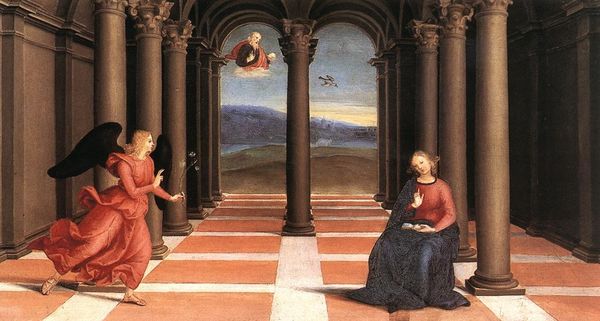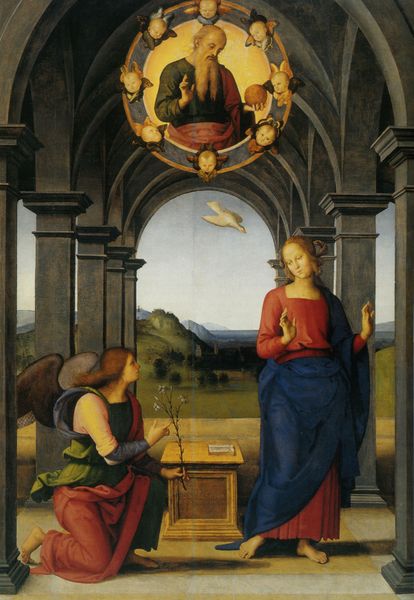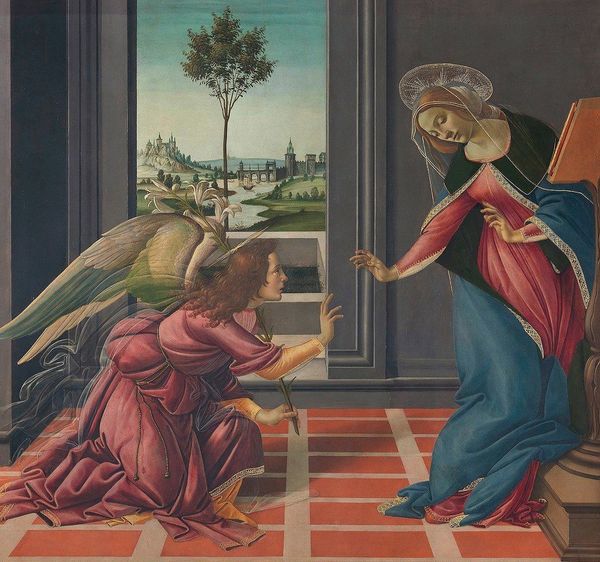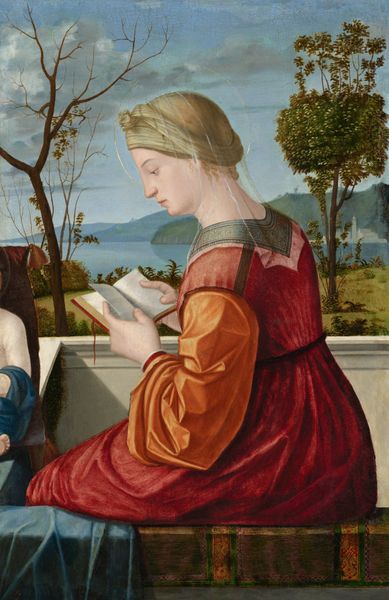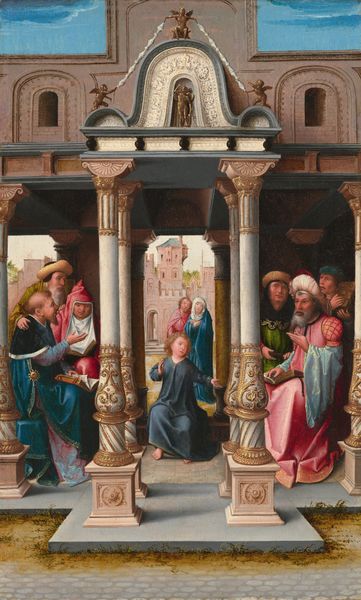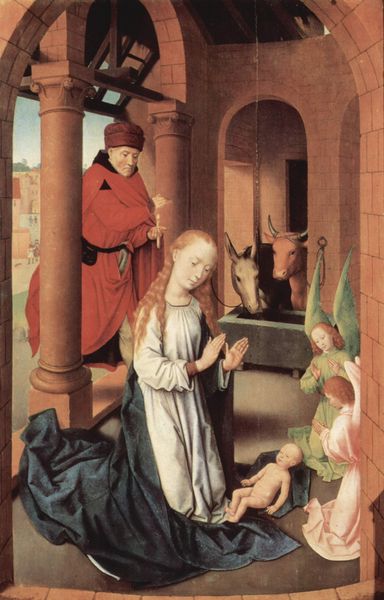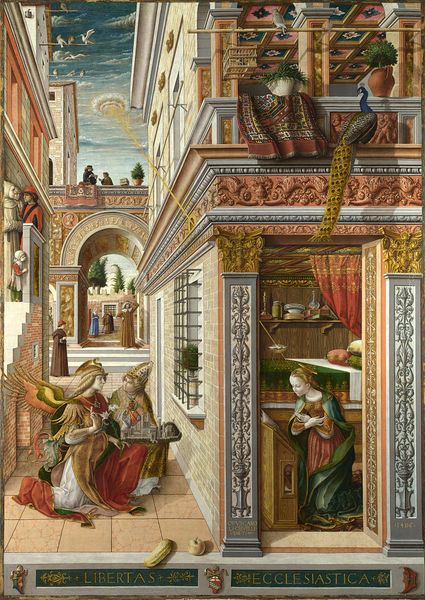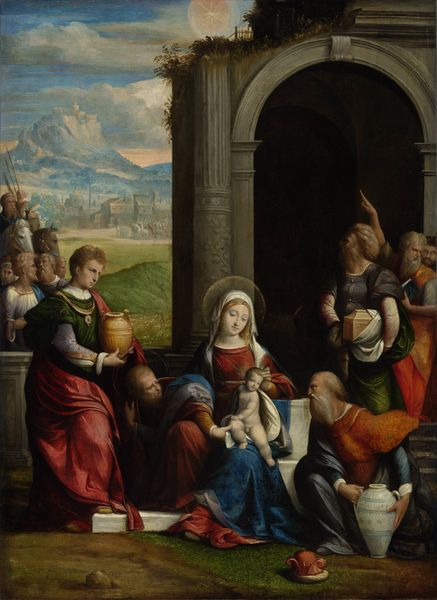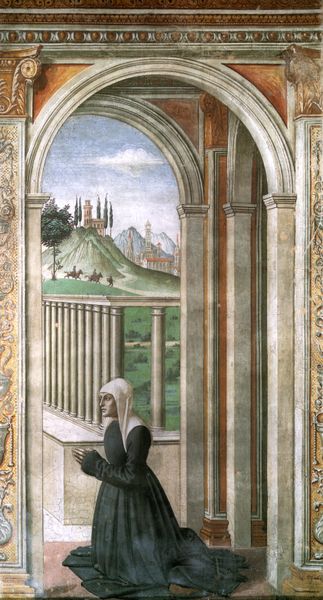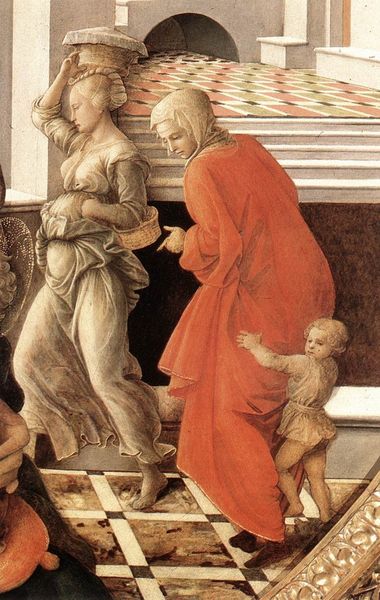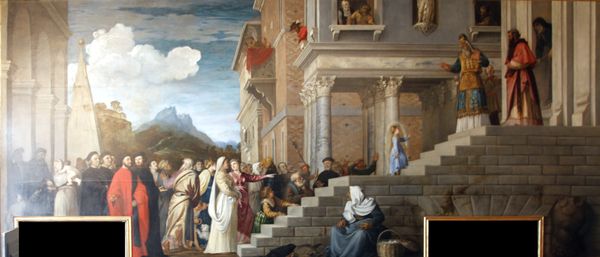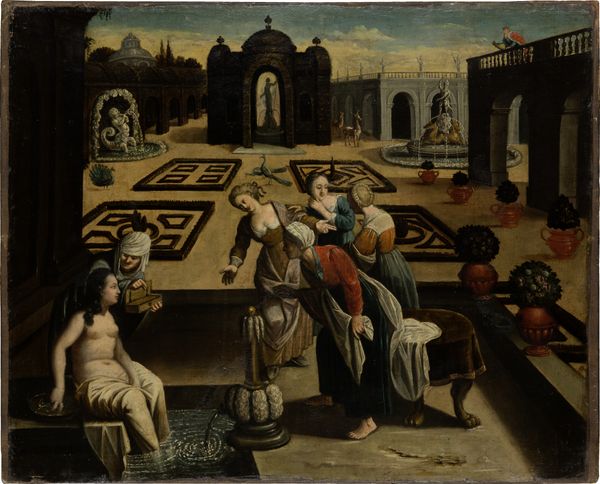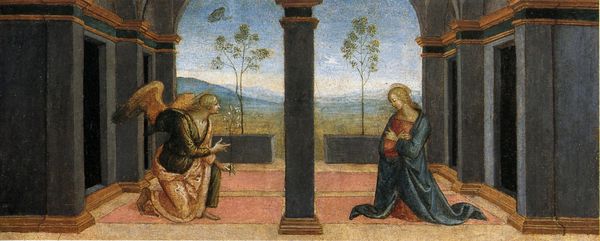
oil-paint, fresco
#
portrait
#
allegory
#
oil-paint
#
landscape
#
holy-places
#
painted
#
fresco
#
oil painting
#
underpainting
#
christianity
#
history-painting
#
italian-renaissance
#
early-renaissance
#
christ
Copyright: Public domain
Editor: We're looking at Perugino's "The Annunciation" from 1497. It’s an oil painting that depicts the Angel Gabriel delivering news to Mary. There's such a sense of calm and order in this painting; the architecture is so clean and balanced, almost mathematical. What do you see in this piece? Curator: What strikes me is how Perugino situates this pivotal, paradigm-shifting moment within such a controlled environment. Think about it: this scene is loaded with implications for women’s agency, divine intervention, and the patriarchal structures of the time. Yet, we have this very formal, almost sterile setting. It speaks volumes about the way religious narratives often suppress the raw, potentially disruptive power they contain. Editor: Disruptive power? I wouldn’t have thought of it that way. Curator: Consider the idea of the Immaculate Conception and the radical questioning of female identity and societal roles it implies. How is that radical nature downplayed here, visually? Where does power reside? Think about the implications of situating it in such an elite and confined area; where are the wider communities impacted by the scene taking place between the angel and Mary? Editor: I see your point! The carefully arranged setting almost domesticates this revolutionary moment. Curator: Exactly! And by understanding this painting, not just aesthetically but as a product of its time and its social forces, we can unpack how dominant ideologies are reinforced through visual language, especially related to female figures in historical narratives. The constraints speak as loudly as the event itself. What's your take away? Editor: I guess that, beyond the obvious religious aspect, it is worth reflecting on how images uphold power and societal dynamics, and not just accept the face-value narrative. Curator: Indeed, a work like this gives us a point from which to consider the ongoing conversation about religious narratives.
Comments
No comments
Be the first to comment and join the conversation on the ultimate creative platform.
